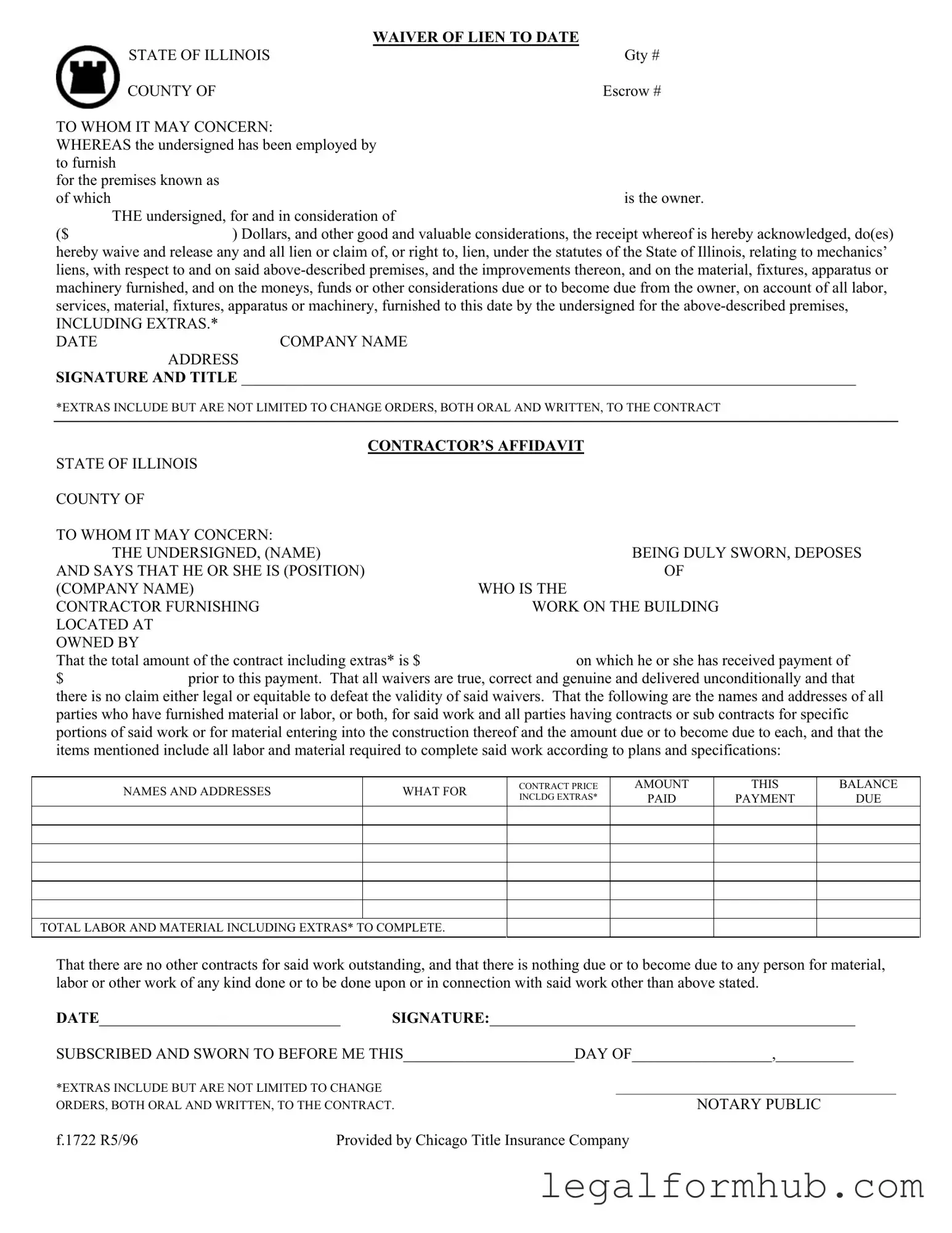The Chicago Title Waiver Format form shares similarities with a document known as the Lien Waiver. A Lien Waiver is a legal document that contractors and subcontractors use to relinquish their right to file a lien against a property. Like the Chicago Title Waiver Format, it is often executed in exchange for payment for services rendered. Both documents serve to protect property owners from potential claims by ensuring that all parties involved in a construction project acknowledge that they have been paid for their work, thus reducing the risk of future disputes over payments.
Another similar document is the Contractor’s Affidavit. This affidavit is a sworn statement made by the contractor, confirming that all payments have been made to subcontractors and suppliers involved in the project. Much like the Chicago Title Waiver Format, the Contractor’s Affidavit provides assurance to the property owner that there are no outstanding claims for payment. Both documents aim to provide transparency and protect the owner from any potential legal claims related to unpaid work or materials.
The Subcontractor Waiver of Lien is also comparable to the Chicago Title Waiver Format. This document is specifically designed for subcontractors to waive their lien rights against the property owner upon receiving payment. Similar to the Chicago Title Waiver, it ensures that the property owner is protected from any claims by subcontractors who may have worked on the project. Both forms emphasize the importance of clear communication regarding payments and help to maintain a smooth construction process.
A Release of Lien is another document that bears resemblance to the Chicago Title Waiver Format. This release is typically used to confirm that a contractor or supplier has been paid for their work, thereby relinquishing any claim to a lien on the property. Both documents function to reassure property owners that they are free from any financial obligations related to the work performed. The Release of Lien serves as a final confirmation of payment, similar to the way the Chicago Title Waiver Format does.
The Final Waiver of Lien is also similar in purpose and function to the Chicago Title Waiver Format. This document is executed at the conclusion of a project, confirming that all parties have been paid in full and that no further claims will be made against the property. Both documents help to clarify the financial status of a construction project and protect property owners from potential future claims. They serve as a record that payments have been settled, ensuring peace of mind for all involved.
For those considering the benefits of emotional support animals, it's essential to understand the importance of the necessary documentation. The Emotional Support Animal Letter form is vital in validating this need, ensuring that individuals receive the support they require to improve their mental health. If you believe that an emotional support animal could positively impact your life, you can begin the process by using the Fill PDF Forms to complete the required letter.
Lastly, the Payment Application can be compared to the Chicago Title Waiver Format. This document is often submitted by contractors to request payment for work completed. It typically outlines the work done, materials used, and the total amount due. While the Payment Application focuses on requesting payment, the Chicago Title Waiver Format provides a formal acknowledgment of payment received. Both documents are integral to the payment process in construction projects, ensuring that all parties are on the same page regarding financial transactions.
